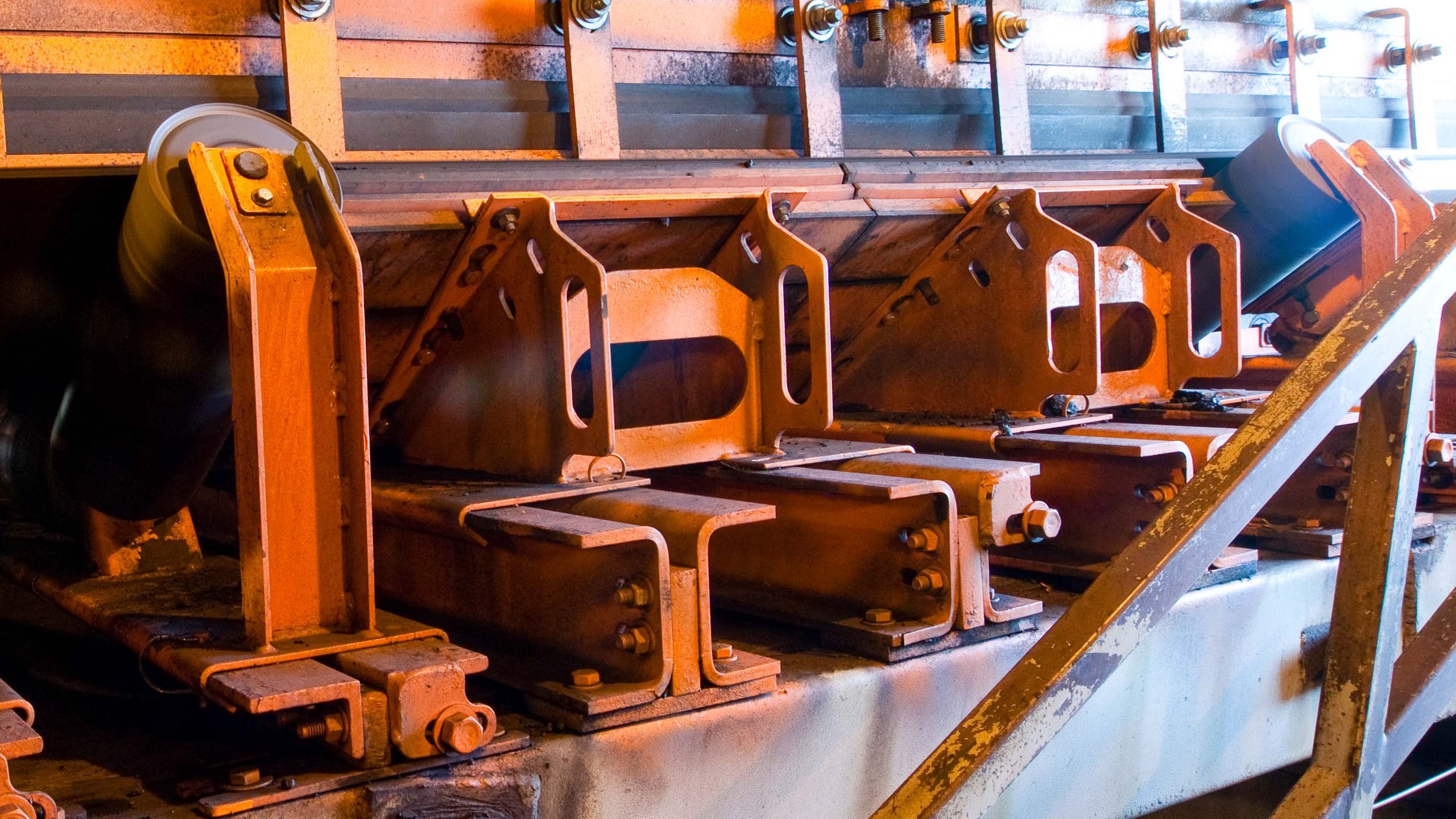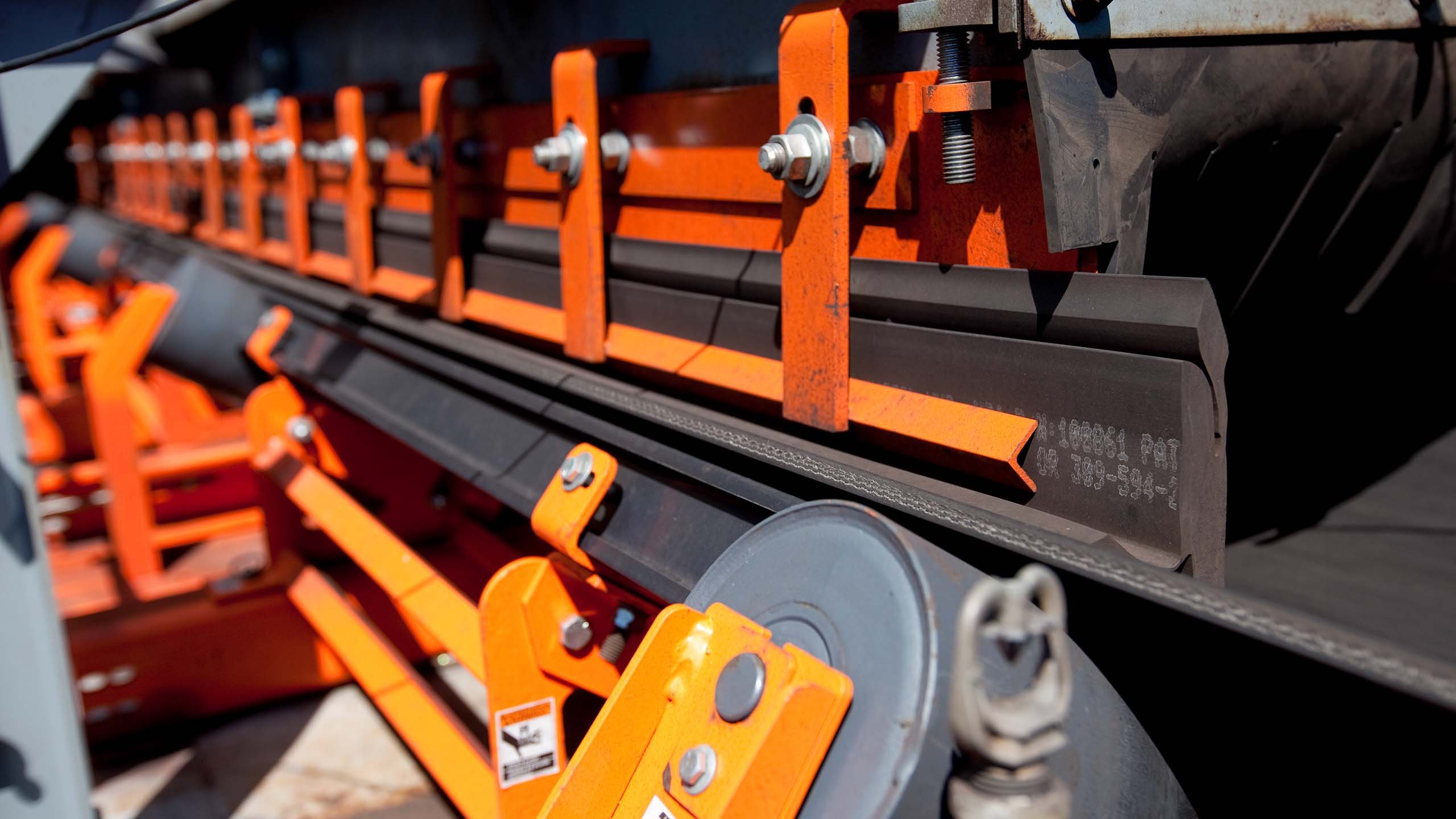When two or more cradles are installed, the use of intermediate idlers—that is, idlers placed between the adjacent cradles—is recommended. Installing an idler set between two cradles (or putting each cradle between two idlers) will reduce the drag of the conveyor belt over the bars. This reduces the conveyor’s power consumption. In addition, the heat buildup in the bars will be reduced, giving the bars and belt longer life expectancies.
When two or more cradles are installed, the use of intermediate idlers—idlers placed between the adjacent cradles—is recommended.
Idlers should be specified before and after each 1200 millimeter (4 ft) cradle; the number of idler sets required for a given transfer point is the same as the number of cradles required plus one. To ensure uniformity for a stable belt line, all of these idlers should be of the same manufacturer with the same size roller. Impact idlers should be used between cradles under the loading zone; conventional idlers can be used outside the impact area. Track-mounted idlers should be used between cradles to allow for ease of maintenance.
In some impact areas, it may be acceptable to go as far as 2.4 meters (8 ft) between intermediate idlers. These applications might include long loading zones where it is difficult to predict the location of the impact and where rollers might be damaged by point-impact loading. These would also include transfer points under quarry and mine dump hoppers, at pulp and paper mills where logs are dropped onto belts, or at recycling facilities that see heavy objects ranging from car batteries to truck engines dropped on conveyors.


.png?width=1200&height=900&name=Low%20Resolution-20190404_153219%20(1).png)


















Leave Comment